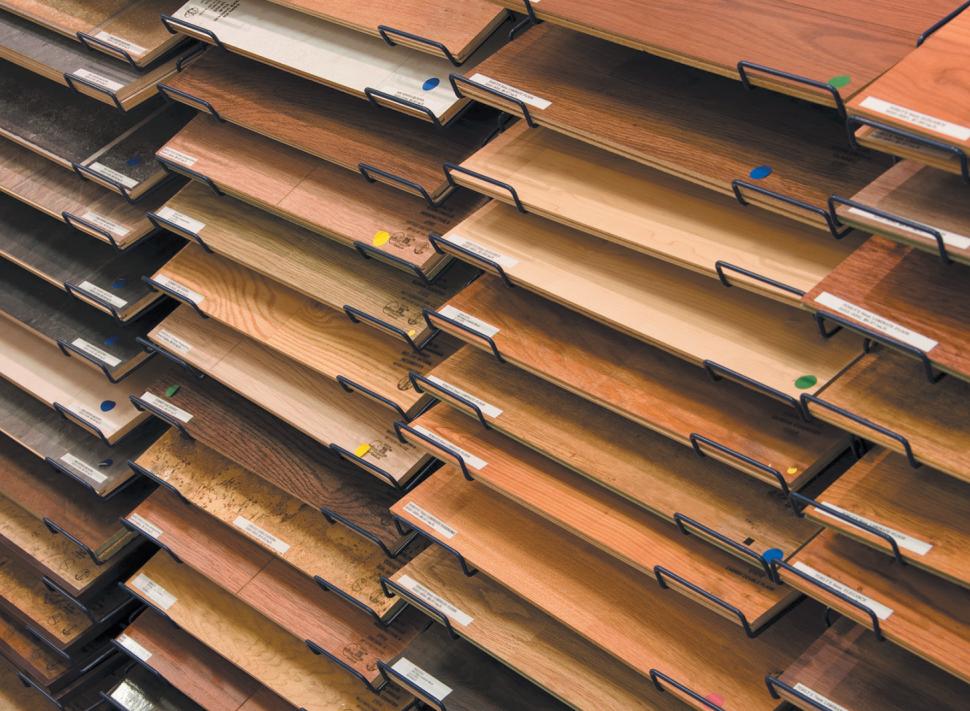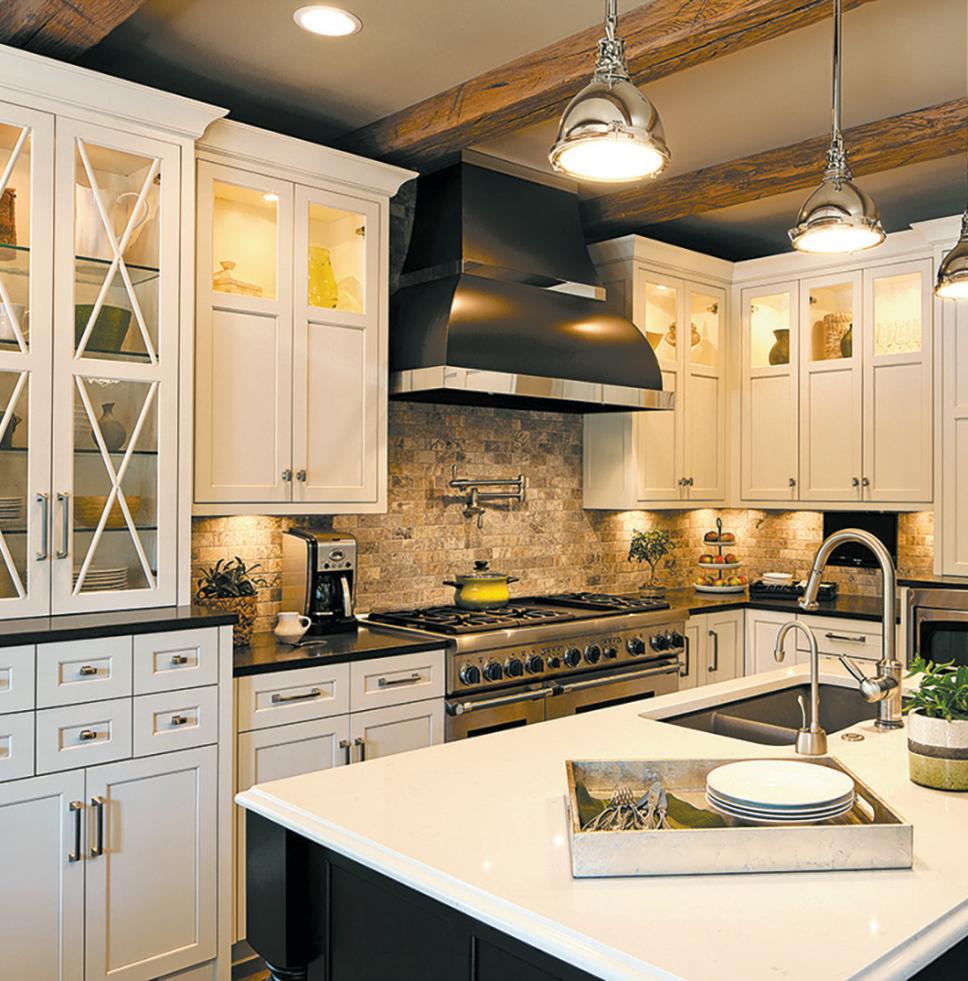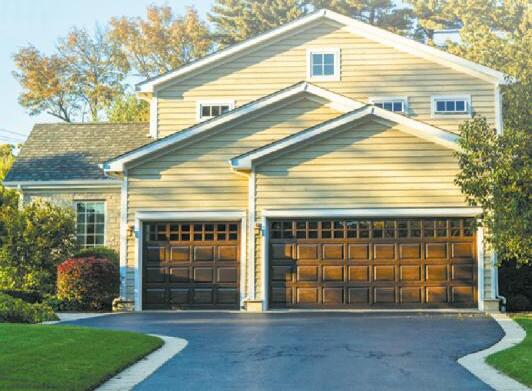
2 minute read
Which wood is best? Narrowing down your choices forsiding, flooring, cabinets andmore
ByAndrea Busche for the Duluth News Tribune
Ifyou’veeverspent an afternoon gluedtothe HGTV network, youknowthatselecting the proper wood products is an importantpartof anyhomeproject.Should youinstall cedar,maple or hickory? Engineered wood products or real wood?


From hardwood flooring to cabinetry, afeature wall to atongue-and-groove ceiling, the options for each project canseemendless. Frank Gerard, presidentofCampbell Lumber in Superior,helps us break it down.

Exterior siding
When it comes to exterior siding, Gerardrecommends one of three products: cedar siding, amanmade, engineered wood productmade by LouisianaPacific, called SmartSide, or pine log siding.

“Cedar has abeautiful grain and it is naturally resistanttodecay andinsect damage,”heexplained. “It has alow shrinkage rateand is alow-densityboard, so it stains andfinishes beautifully.
“SmartSide, which is made at aplantright herein TwoHarbors, is aman-made, modifiedwood prod- uct,”hecontinued. “Itismade from strands of wood coveredwithresins, waxand zinc borate, which actas apreservative. Insectsdon’t likeit. Thereisa30-year warranty on the paint,and a50-year warranty on the boards, so it is amaintenance-free product.
“And, Irecommend pine log siding if someone wantsthe look of real logs,” he added.“It can be purchasedpre-finishedorpre-stained.”
Interior finishes
When it comes to your interior finishes, such as cabinets, moldings, trim, tongue-and-groove ceilings and featurewalls, the sky’sthe limit. “For cabinets, oak is still popular,and alder offers moreofarusticlook. Maple and hickoryare popular choices, too,”Gerard said. “You canalso purchase your products pre-finished,”headded.“Whiteisthe predominantlypopular color formolding and trim.

“For flooring,”hesaid, “engineered wood floors are very popular.Theydon’t shrink, expand or crack, and theyare more stable. Butifyou want arealwood look, hickory, oak, alder andpine aregood choices.”
Decks, porches, &patios
When it comes to high-traffic exterior spaces, such as decks, porches and patios, Gerardisabig proponentofengineered products, made of plastic or composite decking.
“Theycost morebut have better longevity –they offer25- to 30-year warranties,”heexplained. “Engineered products arefar outselling real wood.People aretired ofstainingtheir decks every few years.” If yousimplymusthaverealwood, however, Gerard says cedar is agreat option,due to itsnatural resistancetoinsectsand decay.
Invest in your home
Whileitcan be expensivetopurchasenew siding, flooring, or decking, Gerardsaysthe investment is well worthit.

“Invest in your home,” he said. “It’sa greatplace to put your money. You’ll improve the value of your asset, but you’ll also enjoythe benefitoflivinginanupdated, improved space.
“Invest in your home. It’s agreat place to put your money. You’ll improvethe value of your asset, but you’ll also enjoy the benefit of living in an updated, improved space
Minimize dustwhile renovating
Eventhoughdustisever-presentboth inside and outside of ahome, when renovations are in full swing, dustyconditions areoften exacerbated.
Whether ahome is neworold, numerous substances canbestirredupwhen removing walls, refinishing floors, removing tile, or expanding living spaces. These include silicafromdrywall, lead, asbestos, paintparticles, and even wastefrombugs or rodents.
Homeowners who want to remodel with minimal construction debris floating throughthe air–both forhealth purposes and general cleanliness –may findthese proactivesteps helpful.
Preparedust-containmentplans.Ifa contractor is involved,itisoften his or her responsibility to minimizedust. Doit-yourselfers must makedust containmentapriority.Protectingthe floor and keeping the dust confinedonlyto work areas can be achieved with plastic sheetingand other barriers.
Designate an entranceand exit It’s best to choose one doorwayasthe onlymeans in andout of aworkarea. Ideally, this doorway should lead to the outdoors. All other doorways should be sealedonbothsides.
Remove extraneous items. It’s best to remove clutter from the room,including anyfurniturethatcan be taken out of the space. This helps items from becoming dirtyand hazardous particles from settling into nooks and crannies. Close ventsand registers. If forced airsystems arepartofthe home, it’s best to divertair away from the work area. Block ventsand intakeregisters so thatdustdoes not clog the system or transfer to other rooms.
Cutitems outside. Some power tools have vacuum extractors to suck up dust at thepointofcontact, removing 90 percentofdust whereitis generated.For thosewho do not have access to these tools, cutting and sanding canbedone outdoors to keepdust outside.
Open awindow. If weather permits, an open windowcan provideventilation. Another ideaistocreateanair vacuum in the work area. Picking a windowatthe far end of the work area andmounting awindowfan blowing outward cansuck dust out and away from other areasofthe house. Clean up daily.
By keeping on top of dust, including sweeping and vacuuming the work area frequently, dust will not accumulate and migrateelsewhere.
Dust is acommon side effect of home renovation projects, but it canbeminimized





